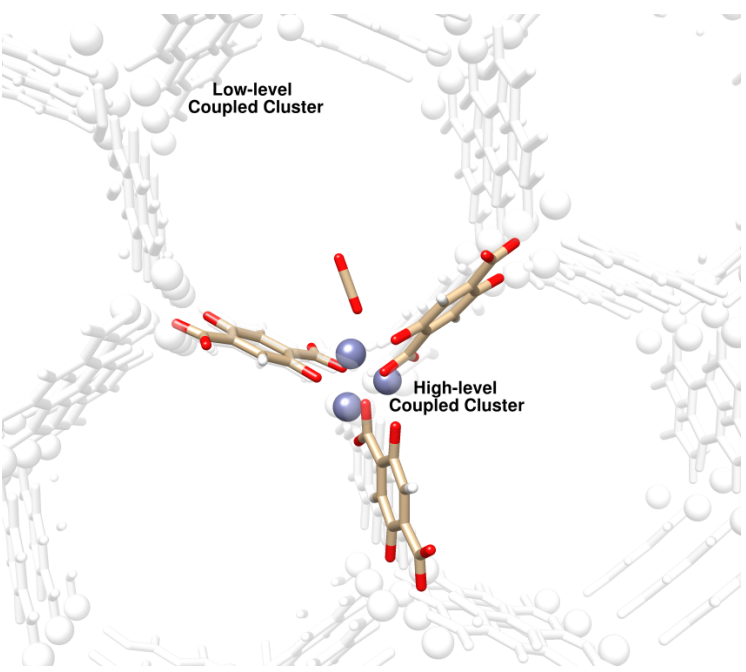Multilayer Divide-Expand-Consolidate Linear-Scaling Coupled Cluster Methods
Dmytro Bykov, Ashleigh Barnes, Dmitry Liakh, and Tjerk Straatsma
National Center for Computational Sciences, Oak Ridge National Laboratory (ORNL), 1 Bethel Valley Rd, Oak Ridge, TN 37831, USA
The divide-expand-consolidate (DEC) scheme provides a means of overcoming the scaling wall associated with canonical coupled cluster (CC) electronic structure calculations on large molecular systems.[1] Taking advantage of the local nature of correlation effects, the correlation energy for the full molecule is calculated from a set of independent fragment calculations using localized molecular orbitals. In contrast to standard CC calculations, the resulting DEC scheme is highly parallelizable and linear-scaling. The other benefit of the DEC scheme is that the independent nature of the fragment calculations allows for the evaluation of the correlation energies of the fragments at different levels of theory.[2] In this study, we report the LS-Dalton program[3] implementation of a Multilayer DEC (ML-DEC) scheme in which higher level theory can be performed on areas of interest within a large system. For example, adsorption sites, defects or active sites maybe be treated at a high level of theory, while the remaining fragments are modeled at a lower level in order to reduce computational cost. As an example the ML-DEC scheme is utilized in the calculation of adsorption energies for a number of small molecules, including acid gases, on the open metal sites of a finite Mg-MOF-74 model system. The results of these calculations are used to draw conclusions about the relative adsorption strengths of small molecules in pristine and defective Mg-MOF-74.

[2] Barnes et al., To be submitted.
[3] K. Aidas et al., WIREs Comput. Mol. Sci., 4, 269 (2014)
ACKNOWLEDGMENTS: This research used resources of the Oak Ridge Leadership Computing Facility, which is a DOE Office of Science User Facility supported under Contract DE-AC05-00OR22725.